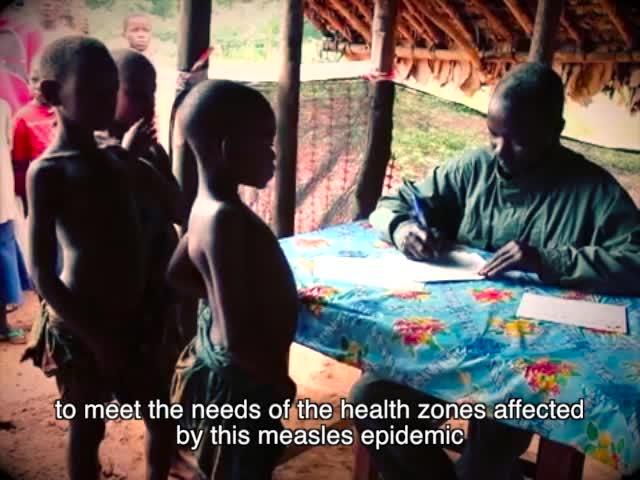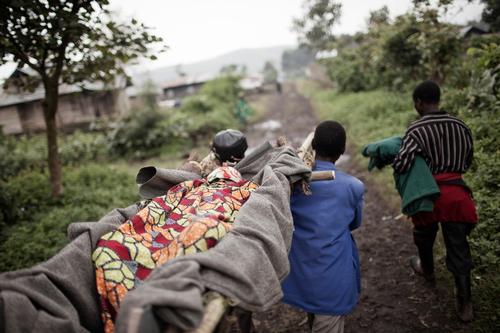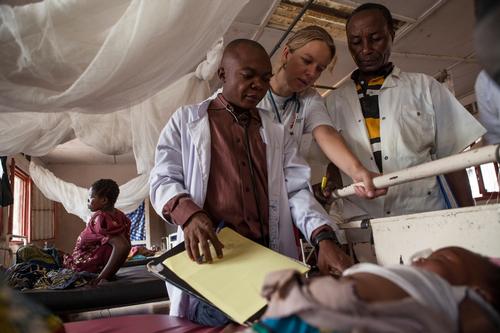
MSF and measles vaccination in DRC
Tessy Fautsch, a nurse, went with Médecins Sans Frontières (MSF) to Wamba in the north of the Democratic Republic of Congo (DRC) to take part in a measles vaccination campaign, part of a new project responding to the epidemic that has been devastating the country since 2010. This new project has two aims: Firstly, to treat confirmed cases to reduce mortality. Secondly, to develop new vaccination approaches that can be imitated by the Ministry of Health in order to contain the disease. Fautsch shared some of her experience in a recent interview.
Reaching remote populations
The vaccination project Fautsch was involved in was set up in Orientale province. Orientale, along with Équateur, is one of the provinces most affected by the epidemic in the north of the country, as have West Kasai and Bandundu in the southwest. “When the measles epidemic is seen to be spreading in an area, as many children as possible need to be vaccinated, even if it is difficult to reach the area. Going to treat people where they live is key to a successful vaccination campaign and is sometimes a real challenge. For example, Orientale province in the north is very difficult to get to. In this region there are few roads because the equatorial forest is very dense. These roads are not maintained and are in a very poor condition. Before the rainy season, it took us two days to travel 450 kilometres between Kisangani, the capital of Orientale province, and Wamba. On the way back it was even more difficult as the cars and trucks got stuck in the mud.”
It can sometimes take a week to reach certain vaccination sites. “In isolated regions, vaccination coverage is poor and measles causes many deaths in children under the age of five. However, we also see many cases in adolescents and adults. In Wamba, we therefore decided to vaccinate populations between the ages of six months and 15 years, as well as some adults to limit transmission. Vaccinating at least 95 per cent of the target population reduces the circulation of the virus and as a result reduces the risk for people who are unprotected. In the Wamba health zone, MSF vaccinated more than 50,000 children, 97 per cent of the target population, preventing the epidemic from spreading. Now the project is moving south, to West Kasai province to respond to a new wave of the epidemic.”
New vaccination approaches
MSF is developing this new project in the areas that are most affected by the epidemic by exploring innovative strategies. In order to reduce mortality connected to measles, a two-stage strategy has been put in place. “First, we concentrate our effort in the areas most affected in order to respond to the emergency. We treat reported cases by aiding general referral hospitals and health centres in the area. For example, in Wamba we treated more than 860 patients infected with measles. At the same time, we vaccinated the people in these outbreak areas in order to contain transmission. This lasted for three or four days and 400 to 500 children could be vaccinated in 24 hours in rural areas. Next, we covered the entire region. The aim was to save resources and make it our priority to travel to the locations where there were cases in order to control the epidemic as soon as possible in a targeted fashion. We adapt according to the information available and change the vaccination order that had originally been planned to be able to respond more quickly to the spread of the epidemic.”
From a technical point of view, one of the issues with a vaccination campaign like this is the cold chain, allowing the vaccines to be properly preserved. “We have a centralised cold chain so that we can store the vaccines at between 2 and 8° Celsius. During vaccination campaigns in isolated areas, we do not need electricity on-site as our insulated boxes are good for up to five days. As such, we have tried to do without refrigerators as far as possible to show that you can carry out vaccination campaigns with limited resources in isolated areas. By using insulated boxes to transport vaccines from the storage site to the vaccination sites, we are able to travel to the most isolated areas.”
This strategy allows more lives to be saved with minimal costs. “It is a strategy that we have implemented in order to demonstrate to the Ministry of Health how effective it is. Ultimately, we hope to see it being adopted by the government and its partners.”
Since 2010, more than 200,000 people have been infected with measles in DRC, and more than 4,500 children have died from the disease. In two years, four million people have been vaccinated thanks to the work of MSF and good collaboration with local health authorities.




